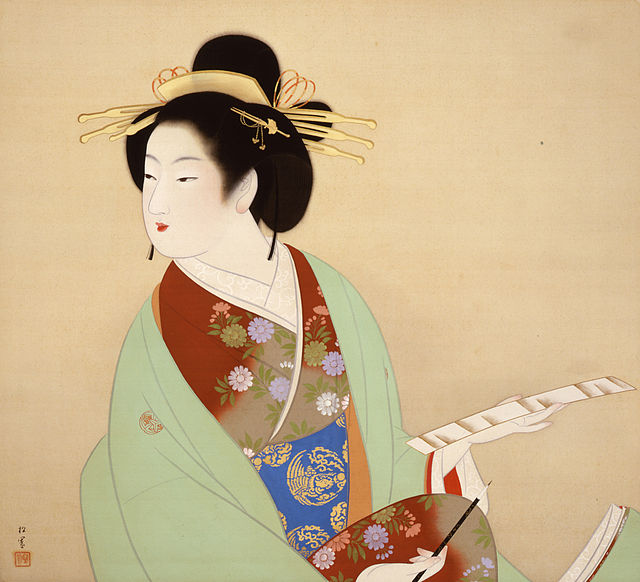Jun 28, 2022
Art Museums Around Hiroshima
The city of Hiroshima has a rich history and culture reflected in its museums and galleries. If you’re looking to spend some time delving into its art archives, you can find spaces both big and small showcasing a fine range of paintings, sculptures, artifacts and more. Here are a few facilities to check out.
Hiroshima Museum of Art
Located within the city’s central park just south of Hiroshima Castle, the Museum of Art was opened in 1978 and features a mixture of European and Japanese art from the past couple of centuries. The building itself is an elegant circular structure consisting of 8 galleries in all. The four main galleries focus on European art from the past 150 years, mostly French impressionism. You can find works by the likes of Monet, Degas and Van Gogh. There are four further annex galleries with around 90 works by Japanese artists from the Meiji period to the present. These include sections dedicated to Japanese western-style oil paintings as well as Nihonga Japanese art.
There are also special temporary exhibitions plus concerts and talks. Entry for special installations is usually around 1,400 yen for adults and 500 yen for children. The museum was built in homage to the city’s Atomic Bomb Dome and has a motto of “For Love and Peace” in commemoration of the victims of the 1945 bombing. Outside you will find a beautiful garden filled with many trees, including one donated by Pablo Picasso’s son in 1980.
Website: https://www.hiroshima-museum.jp/en/
Hiroshima Prefectural Art Museum
Hiroshima Prefectural Art Museum is a much bigger space – one of the largest art museums in Western Japan, in fact – consisting of around 3,500 works on rotation. There is more of a focus on local and regional art than in the Museum of Art. However, there are also non-Japanese pieces including Salvador Dali’s magnificent “Dreams of Venus”. The museum is divided into four main sections – Japanese Nihonga art (including works by Ikuo Hirayama), traditional Asian arts and crafts, art from the 1920s and art from the 1930s.
Built in 1968, the museum is just north of the downtown shopping center right next to Shukkeien Gardens. In fact, you can buy an entry ticket to the gardens that includes entrance to the main museum exhibitions for just 600 yen. In addition to the permanent works, you will find many temporary special exhibitions plus local student shows. Although not much on the site is available in English, there is a regular English-language show called the English Kagura Experience. Also within the museum space are a restaurant, tea room, gift shop, video rooms playing art films, and two folding screens depicting Japanese shrines from the Edo period.
Address: 2-22 Kaminoboricho, Naka-cho, 730-0014
Hiroshima City Museum of Contemporary Art
A modern art museum is probably not the first thing you’d expect to find in the middle of a mountaintop park, but that’s what you get in Hiroshima’s Hiyajama Park. Opened in 1989, the Hiroshima City MOCA is the most recent of the city’s “big three” art museums. The museum is currently closed for refurbishment until spring 2023 but, when opened, it is very much a space “as it says on the packet” in that it is dedicated to modern expressions of art. It features, among other things, paintings, design, architecture, video art and performance art. Works are mostly by Japanese artists but there are also notable works by international artists such as Henry Moore and Andy Warhol.
The building itself is quite spectacular, designed by Kisho Kurokawa who was at the forefront of the local Metabolist movement in the 1960s. It combines a Greek agora meeting space with a Japanese storehouse. When you’ve had your fill of modern art and checked out the many sculptures dotted around the outside of the museum, you can take in some great views of the city from Hiyajama Park.
Website: https://www.hiroshima-moca.jp/en/
Izumi Museum of Art
This is a much smaller art space located a 12-minute walk from Araiguchi station. The focus of the museum is more concentrated on Japanese and regional art although the building does house a number of Japanese paintings in the westernized style. You can also find collections of engraving and antique porcelain art. The museum has a nice tea room, a pretty garden, and a heartwarming “No art without caring for neighbors” motto. The entrance is only 300 yen.
Website: http://www.izumi-museum.jp/ (in Japanese)
Kimita Origami Museum
Situated within a closed elementary school building just north of Miyoshi, this quaint and delightful museum is dedicated to the classic Japanese art of paper folding. Come along and marvel at some of the creations from the two giant ningyo dolls outside the entrance to the small cute paper animals and extensive constructions and landscapes on display inside. Entry is 200 yen and you can book up origami lessons for 500 yen.
Address: 300-4 Hitsuta, Kimita-cho
Shoen Uemura, Public domain, via Wikimedia Commons


About the author